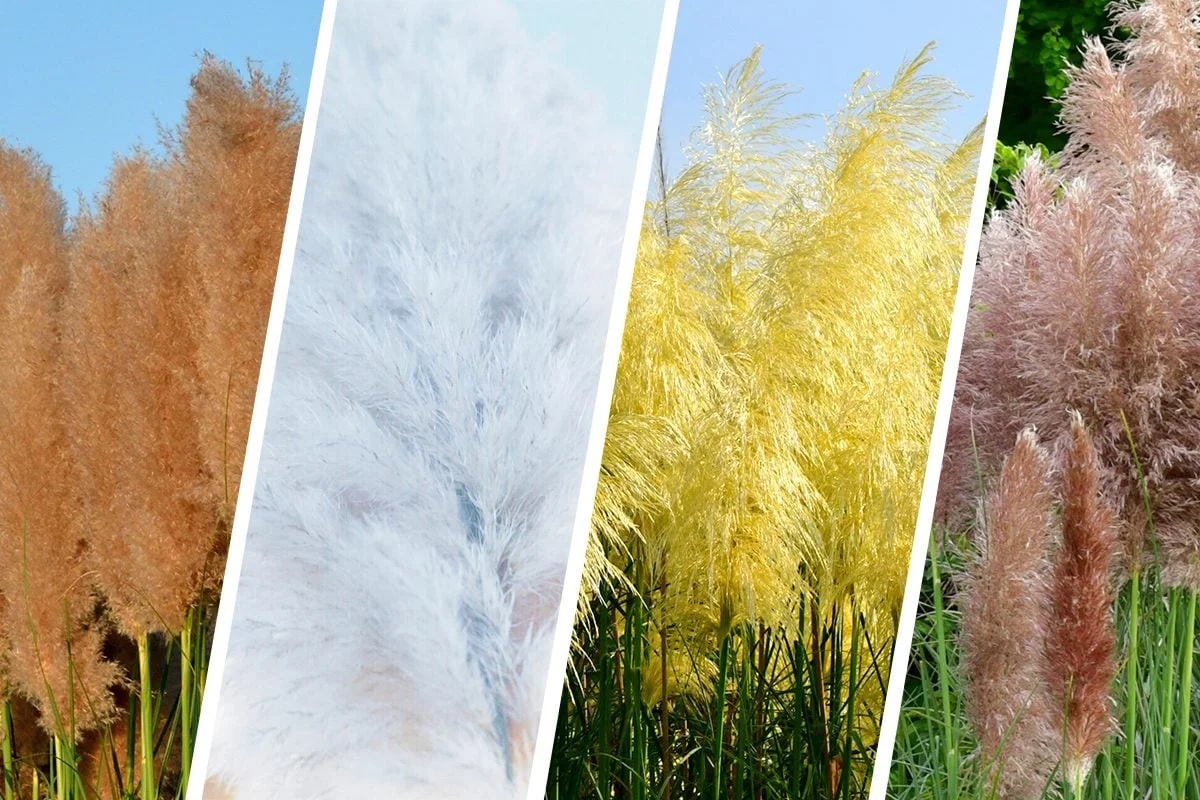Pampas grass comes from South America and is a tall, pretty grass that’s known for its amazing, feathery plumes. These plumes, which are often white or pink, add a big and dreamy touch to gardens and landscapes. Pampas grass does best in sunny spots and likes soil that drains well, but it can usually grow in different kinds of soil. It’s known for being tough and easy to take care of, which makes it a favorite for gardeners who want to add texture and height to their outdoor spaces. This plant is also great for dried flower arrangements, bringing a little bit of nature’s beauty inside your home.
Garden lovers and home decor fans! Today, I’m talking about pampas grass – that fluffy, impressive plant that’s showing up all over in gardens everywhere. Let’s find out how you can grow your own pampas grass to make your garden look even better.
Choosing the Right Spot
Location, location, location! Pampas grass loves the sun, so pick a spot in your garden that gets plenty of it. These plants are not shy about spreading their wings (or leaves, in this case), so make sure to give them ample space. Think about how the grass will integrate with your current garden layout.
Soil Prep and Planting
Pampas grass isn’t too picky about soil, but it does like it well-drained. Before planting, loosen the soil and mix in some compost to give it a nutritious boost. When you plant your pampas grass, give it a good watering to settle it into it’s new home.
| Step | Details |
|---|---|
| 1. Choose Location | Select a sunny spot in the garden. Pampas grass needs full sun exposure for optimal growth. |
| 2. Soil Testing | Optional but recommended. Test soil for pH and nutrient levels to understand if any adjustments are needed. |
| 3. Prepare Soil | Loosen the soil to a depth of about 12-18 inches. This helps the roots to establish more easily. |
| 4. Improve Soil | Mix in organic matter like compost or well-rotted manure. This improves drainage and adds nutrients. |
| 5. Dig a Hole | The hole should be twice as wide and just as deep as the root ball of the pampas grass. |
| 6. Planting | Place the plant in the hole so that the base is level with the soil surface. Backfill the hole and firm the soil gently. |
| 7. Watering | Water the plant thoroughly after planting. This helps to settle the soil around the roots. |
| 8. Mulching | Apply a layer of mulch around the base to conserve moisture and suppress weeds. |
Caring for Your Pampas Grass
Taking care of pampas grass means watering it regularly, especially when it’s dry, and feeding it in the spring so it grows well. Cutting off the dead leaves in late winter helps new ones grow. Watch out for pests and keep it from spreading too much so it stays healthy and looks good all year.
Watering and Feeding
Pampas grass needs a medium amount of water, especially when it’s dry, to look its best. It can handle some dryness once it’s grown, but regular water helps, especially in soil that drains well. In early spring each year, give the grass a balanced, slow-release fertilizer to help it grow strong and make pretty plumes. Don’t give it too much fertilizer, or it might grow weak and have fewer plumes. Proper watering and feeding are important for keeping the plant looking great.
Pruning and Maintenance
Cutting back pampas grass is important to keep it healthy and looking good. In late winter, cut the leaves down to about a foot above the ground, taking off dead plumes and leaves so new growth can come in spring. Wear gloves because the leaves can be sharp. Check often for shoots that are spreading and remove them to control how much it grows. This care helps your pampas grass stay pretty and not take over your garden.
Dealing with Potential Issues
Even tough plants can have problems, and pampas grass is no exception.
Watch Out for Pests
Even though pampas grass is pretty tough against pests, it can still get them sometimes. Common garden pests like aphids and mealybugs can sometimes infest the plant. These pests suck the juice from the grass, making it weak and possibly causing the leaves to change color or not grow as much. Check your pampas grass often for signs of pests, like clusters of small bugs, sticky stuff, or leaves that look weird. If you see pests, treat them right away with the right bug spray or natural pest control like neem oil or insecticidal soap. Taking good care of the plant so it grows healthy can also help it fight off pests on its own..
Handling Invasiveness
Pampas grass can sometimes spread too much because it grows strong and makes a lot of seeds. To control its spread, think about planting it in big pots or using root barriers in the ground. Regularly trim the plumes before they make seeds and quickly remove any baby plants you don’t want in your garden. These steps help control how much it grows, stopping the plant from taking over other parts of your garden and spreading where you don’t want it, keeping your garden balanced and looking nice.
Creative Ways to Use Pampas Grass
Now for the fun part – using your gorgeous pampas grass in your garden decor!
As a Focal Point
Pampas grass, with its tall size and pretty, feathery plumes, makes a great focal point in garden design. Its towering presence and soft, flowing texture add a dramatic but calm element to landscapes. When deciding where to put pampas grass, think about how big it will get and put it where it can stand out without hiding smaller plants. Its unique look works great as the center of a garden bed or as a striking background for mixed borders. The way the plant moves naturally and catches light brings a lively and eye-catching interest to any garden setting.
In Arrangements
Pampas grass plumes, with their feathery and delicate look, are stunning in flower arrangements. They add height, texture, and a touch of natural elegance to both fresh and dried bouquets. They work well with many different flowers and greenery, making rustic, bohemian, or modern decor styles look even better. For a long-lasting display, use dried plumes, which keep their beauty without wilting, bringing a graceful, airy charm to gardening spaces.
Conclusion
Growing pampas grass in your garden can make it look a lot prettier, adding a touch of elegance and a unique visual element. Whether used as a striking focal point, a lively backdrop, or as a graceful part of flower arrangements, pampas grass brings a sense of natural beauty and peace to your space. It’s easy to care for, and with a little attention to controlling its growth, it’s a rewarding choice for gardeners. By using its versatility and charm, you can turn your garden into a pretty haven that catches the eye and soothes the soul.




